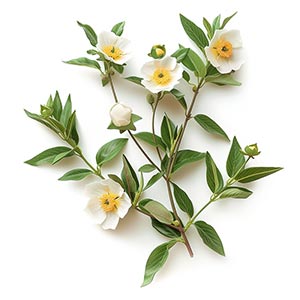Cistus, commonly known as Rockrose, is a key ingredient in perfumery, known for its warm, deep, and resinous aroma. It is derived from the Cistus plant, primarily found in the Mediterranean region. The fragrance of Cistus is obtained from the resin produced by the leaves and stems of the plant, traditionally through solvent extraction. The history of Cistus in perfumery dates back to ancient times when its resin, known as labdanum, was collected from the beards and thighs of goats and sheep that grazed among the Cistus shrubs. It was used in incense and perfumes in various ancient civilizations including the Egyptians and Greeks. In modern perfumery, Cistus is highly valued for its rich, warm, and slightly sweet balsamic notes. It is a staple in oriental and chypre fragrances, adding depth and complexity. Its scent profile often contains nuances of amber, wood, and spice, making it versatile in blending with various notes for a harmonious and luxurious aroma.
Natural or Synthetic?
Cistus is used in its natural form in perfumes due to its unique and irreplaceable aromatic profile. The complexity and richness of its natural resin are difficult to replicate synthetically. Moreover, the traditional methods of extracting Cistus resin, while labor-intensive, yield a high-quality and authentic ingredient cherished in the perfume industry.
Fragrance Families Cistus Most Commonly Found In
Show fragrances that contain Cistus as a note



